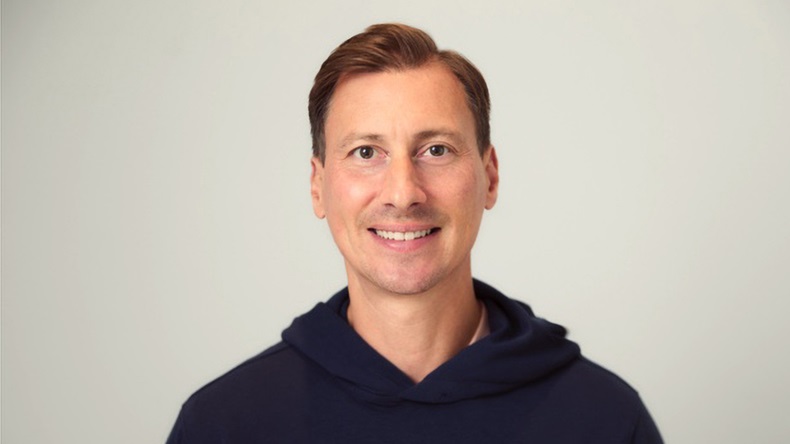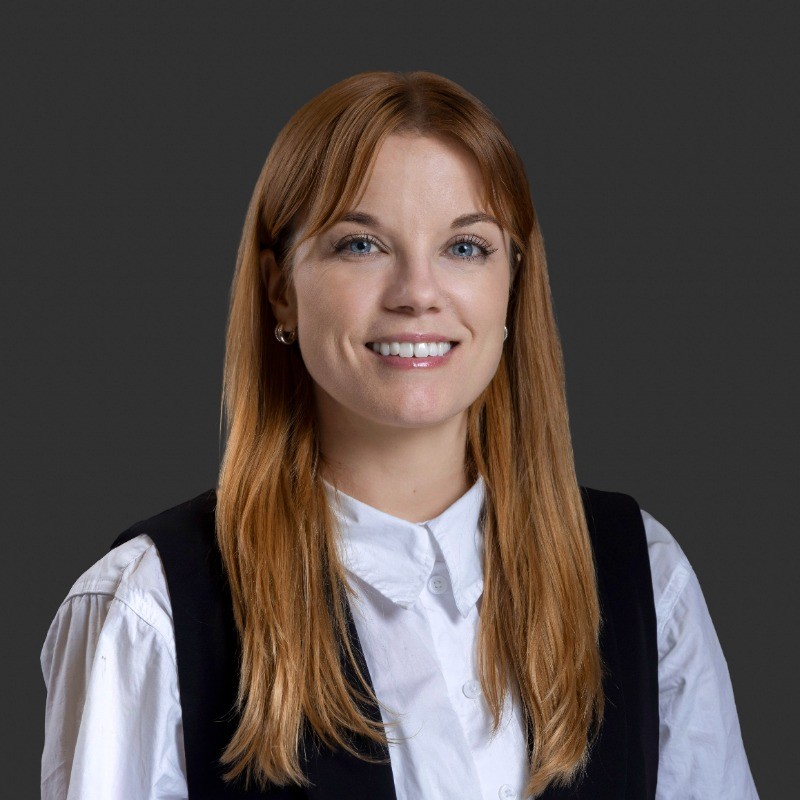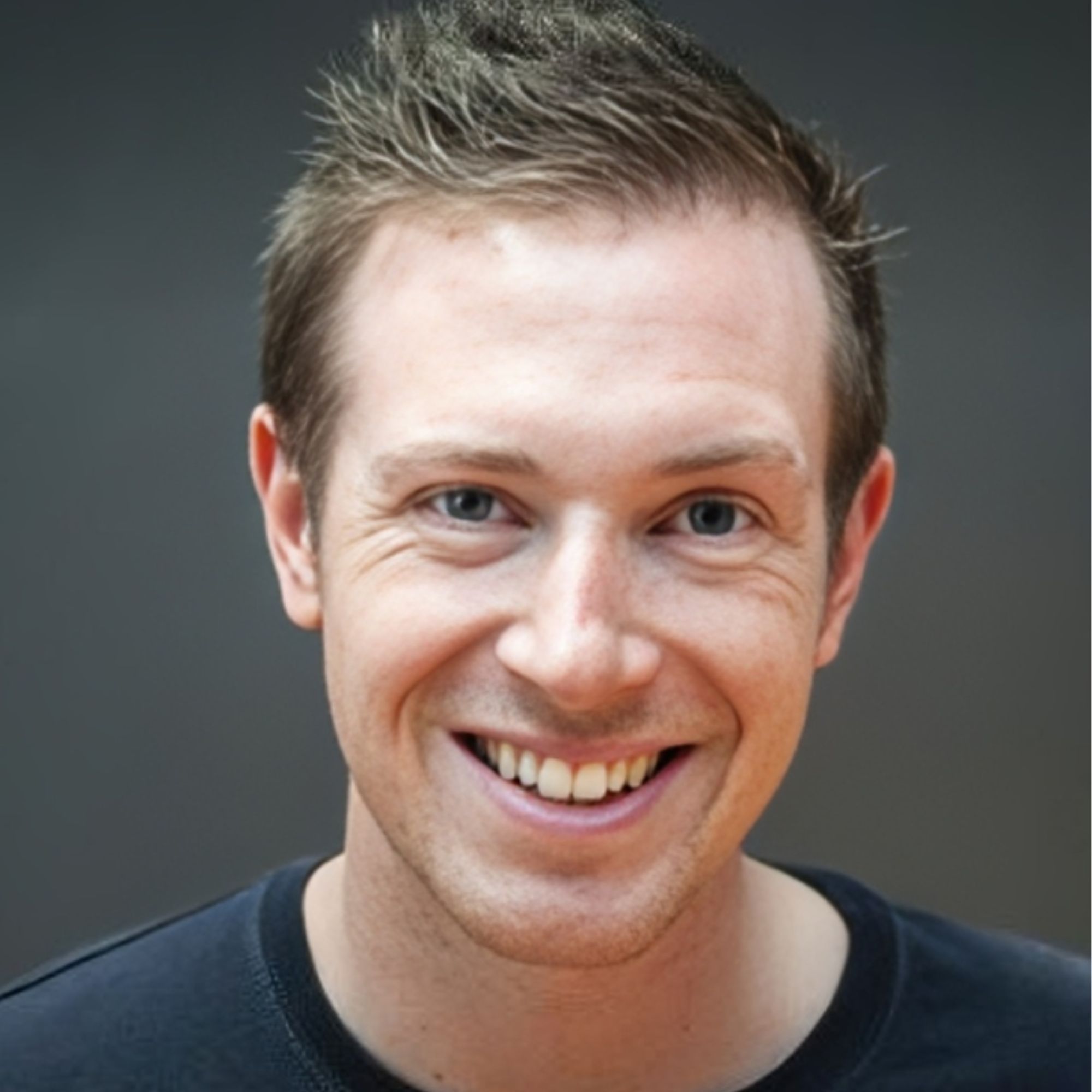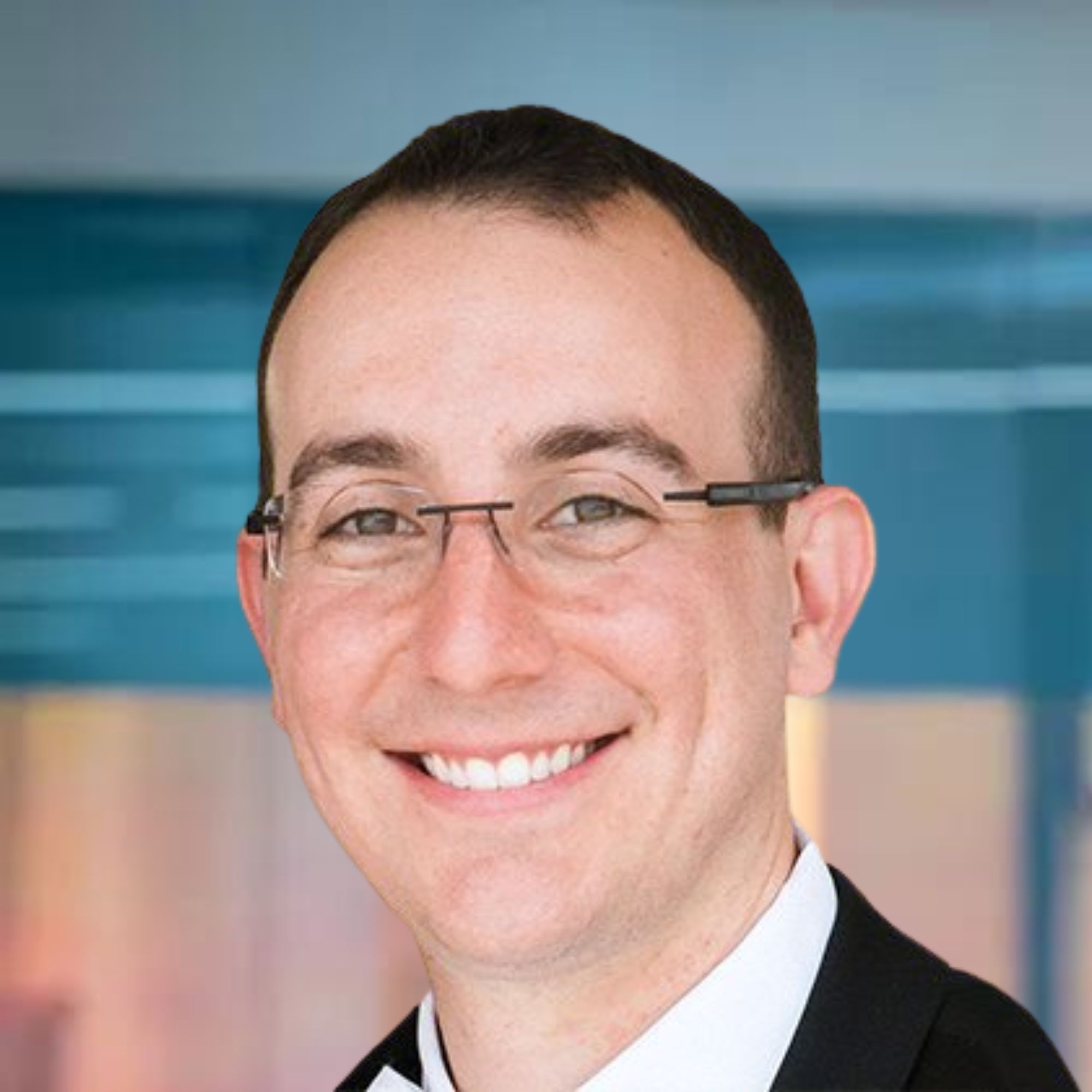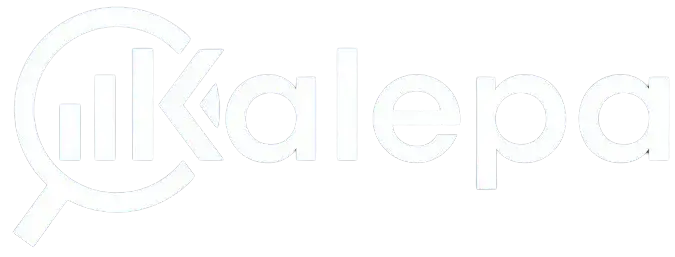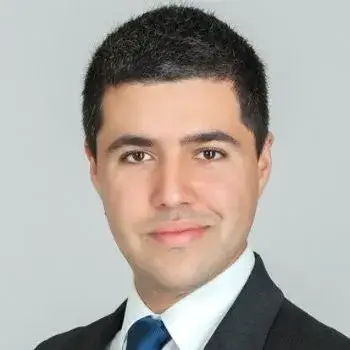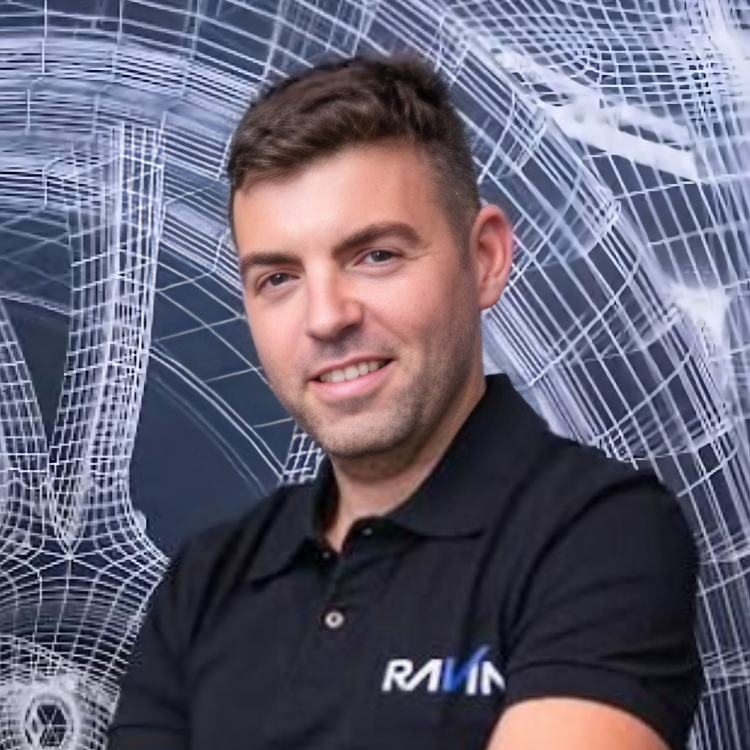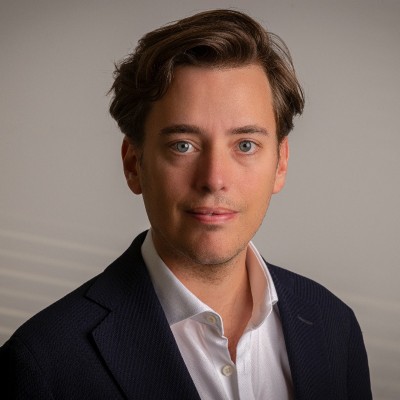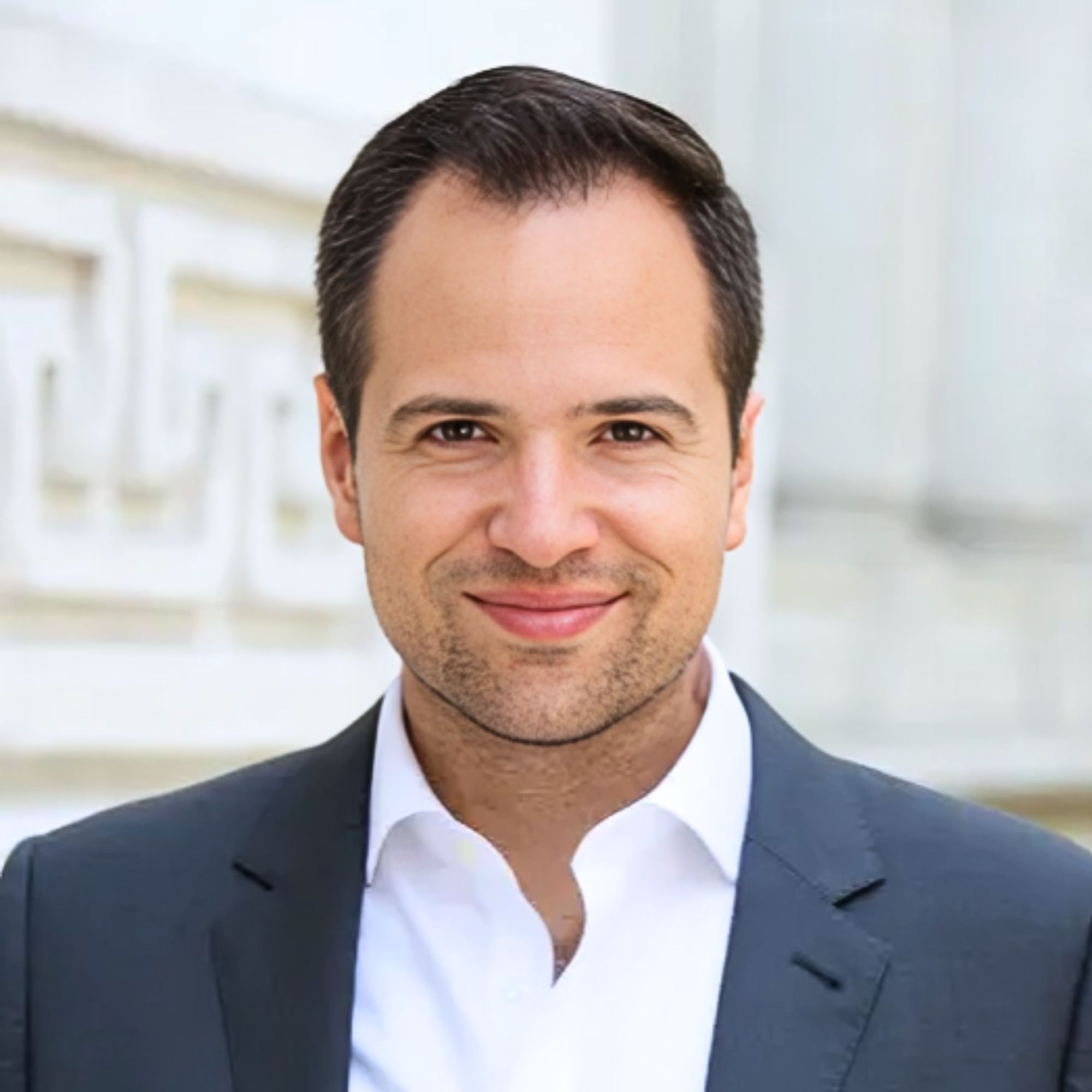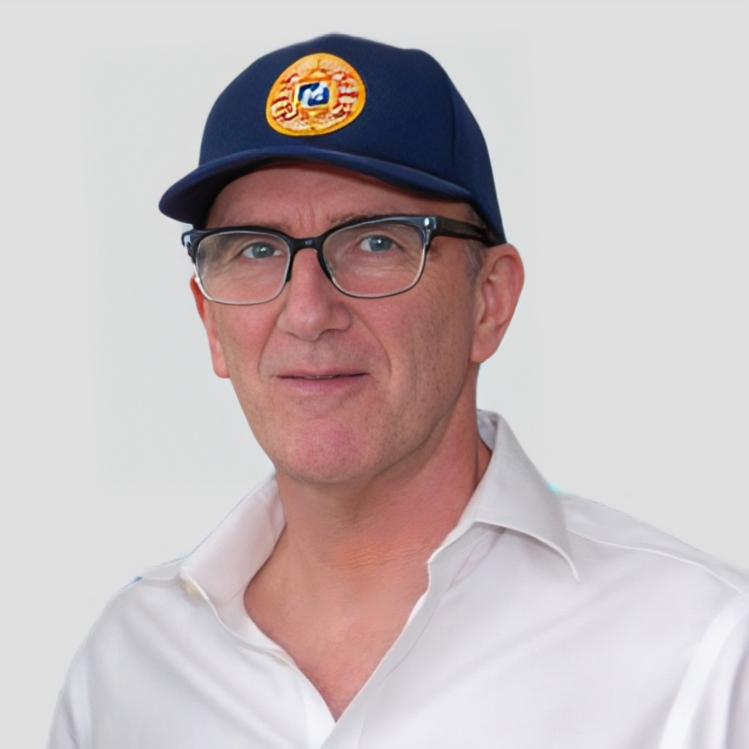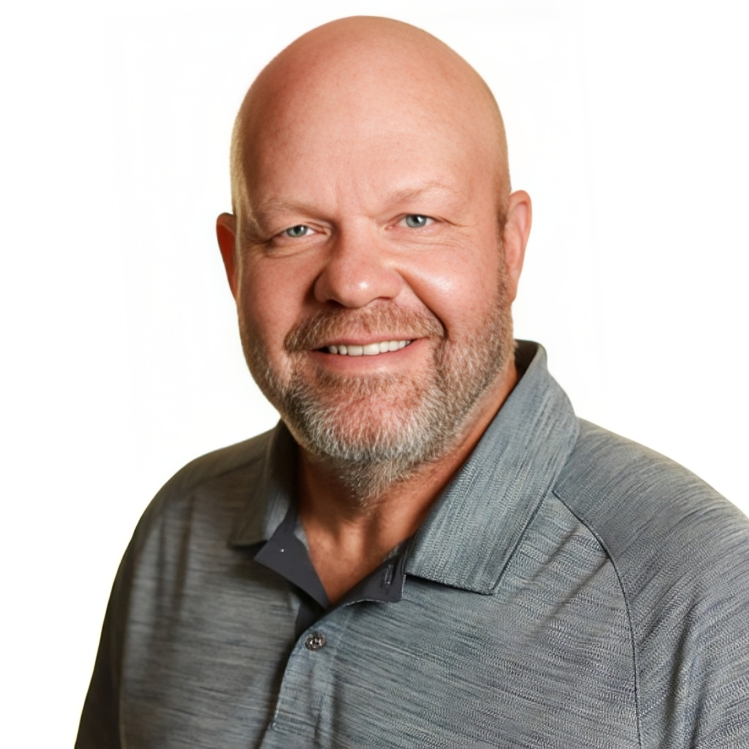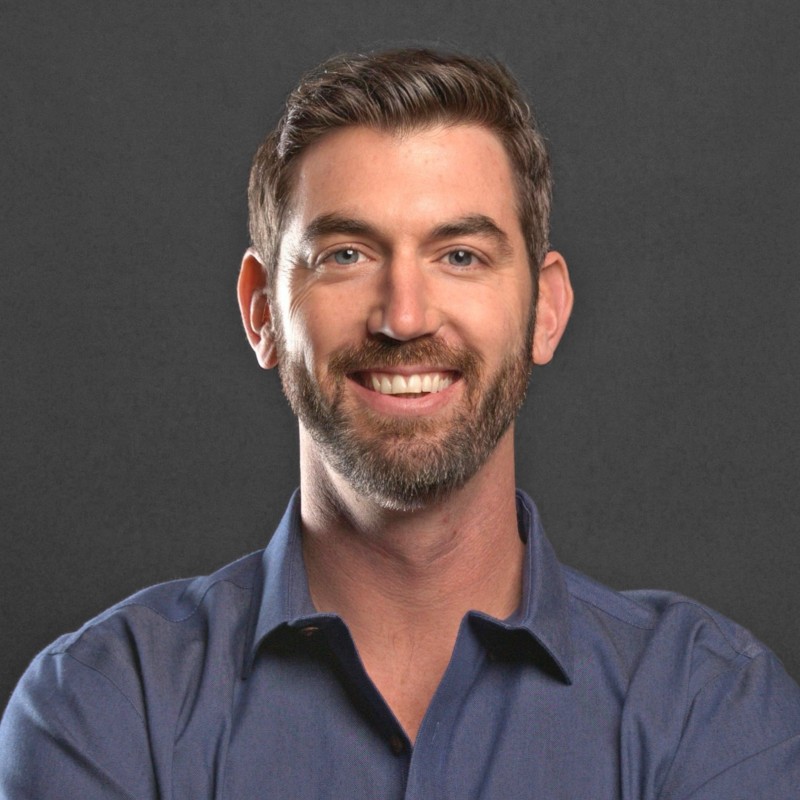Ready to build your own Founder-Led Growth engine? Book a Strategy Call
Frontlines.io | Where B2B Founders Talk GTM.
Strategic Communications Advisory For Visionary Founders
Actionable
Takeaways
What are you building at Authentic?
Authentic is building a captive insurance platform, which means something to about one of every ten people I talk to. And so what a captive insurance platform is we go to anyone that touches a group of small businesses. And that would be like a franchisor. It could be a vertical software company, it can be an association, and we actually allow them to start their own insurance program. So an example would be Wendy's. Instead of Wendy's restaurant buying insurance through State Farm or Liberty Mutual, Wendy's can start Wendy's insurance leveraging authentics infrastructure. Or in the vertical software world, somebody like a mindbody can offer mindbody insurance to their 60,000 gyms alongside their core software and payment offerings. And so we're really enabling folks with existing distribution to add insurance as another product. And the way we're delivering it in the form of a captive gives them superior economics to a lot of the other options they have.
How would you define captive insurance in simple terms?
Captive insurance started 30 or 40 years ago where really big companies didn't want to pay third party insurance carriers. So an example would be like, Walmart didn't want to spend $200 million in premium to Chubb. So instead they started Walmart insurance company to essentially self insure themselves. And so in setting all of that up, it saves Walmart a lot of money, but it's a real challenge. They need to go through regulatory approval and find reinsurance and figure out how to do all the insurance pricing. So there's a lot of ugliness and setting up these captives and that's what authentic extracts away. And so we deliver this kind of captive as a service model today to anyone in the small business space. So it's about as close as you can get to starting your own insurance company, but it's all hosted by authentic, if that makes sense.
What were you doing before that led you to build a captive insurance in a box platform?
Yeah, it's really two tracks that led me to captive in a box platform. I was fortunate enough to spend six years an investment firm called Aquiline, which focuses on financial services investing. And we had a number of vertical software companies that sold software and payment services to small businesses. And were trying to figure out how to offer an insurance product to these small businesses. And so we could partner with other carriers and sell leads. We could use a consultant and try and build some type of brokerage program. But really when I laid out the options, having our own captive model was the most impactful and gave us the most control over the product and the experience and the way I came up with a captive model, actually I have a family member in the insurance space and he actually had formed a captive insurance program for horse farms in the northeast. So the example there is, instead of horse farm buying insurance through Liberty Mutual or state Farm, they could join the captive program of their fellow horse farms and essentially join an insurance pool of their peers. And they could get much better rates. They get the money back at the end of the year if theres leftover profits. And so I had some exposure to captives through family. And then I was in this very unique seat at an investment firm that was trying to figure out how to crack this embedded insurance code. And that's sort of when captive came as the AHA moment for embedded insurance.
What were those early days like when you started in late 2022?
It was late 2022. I was wandering in the desert, as I like to refer to those first few months. I had the idea high level. I had enough conviction where I wanted to go out and build it on my own. And then I think one of the most challenging parts of being an entrepreneur is when your inbox is zero and you don't have meetings and nobody probably wants to talk to you, but you just need to kind of keep wandering in the direction that you believe is the right path. And so the first three to four months, it was really about talking to as many potential partners as humanly possible, trying to gather all of the potential customer feedback that I could potentially garner. And what that meant in practice was talking to as many franchisors, talking to as many vertical software companies, talking to a ton of associations, all of these folks where I could essentially just pitch them on, hey, if you guys had a platform or some type of infrastructure, would you start your own captive insurance program and offer insurance to your small business customers or small business members? And the feedback I got continued to be overwhelmingly positive. And which, with each of those conversations, you learn one new thing every time, which compounds after your hundredth conversation and all of a sudden you're pitching something that's a little bit more of a real product. So I would say that was the first kind of three or four months alongside of building the team. We were very fortunate. The folks at Slow Ventures took an early debt on me a couple months after I had decided to make the leap into entrepreneurship. And so they really funded my idea and believed in what I sort of saw as the future of insurance distribution. And here we are now with active customers and a team of twelve across New York and Dayton, Ohio.
What do you think Slow Ventures saw in you?
I was really passionate about this idea. I still obviously am. It's obvious to me, maybe more people in my demographic that I would rather buy insurance through a trusted channel that I already interact with, as opposed to some insurance brand that I haven't worked with. Or maybe they've been around for a while which gave them value to some folks. But if I'm a gym and I use mindbody for scheduling and payments and lending, id rather get my insurance there as opposed to googling around for gym insurance and then calling into some call center at a large insurance carrier. So I think the idea is, or this is just obviously where the puck is going. And I think they candidly just saw my conviction level in it and the fact that I had been in this space for six or seven years. And so I think that's what really prompted them to write the check.
How did you land your first paying customer?
All of those meetings I took to gather potential feedback. As I said, the reception was very positive. You never know if someone's actually going to be a customer until you put a piece of paper in front of them and ask them to sign it. But as you can imagine, once we had a working prototype, immediately went back to the folks I had one or several meetings with and said, hey, you know that captive platform you were so excited about in theory? Well now it's here and I'd love for you to sign a contract. So I had so many meetings where not everybody that was excited about it said yes, but I was very pleased with the amount that we're willing to move forward and take a chance on a startup, and I think that's a credit to the idea.
How would you define or describe your marketing philosophy today?
Great question. My marketing philosophy as CEO is insurance is a relatively small space, insure tech I should say, and a lot of these different channels that were pitching, they all talk. So all of the vertical software folks were pitching talk, all of the franchisors talk, all of the associations talk. If we just do such an incredible job with a small subset of customers and our product is really that great and creating that much value, that channel will hear about it. And that's proven to be the case over the last couple of weeks or months. We're only five months into launching our product, so it's still pretty new and you are talking to the enterprise sales team at this point, but we're really excited to see kind of the word of mouth that's been happening within these channels for the value that we're creating for folks.
Is it clear who the ICP (Ideal Customer Profile) is yet, or is that still being figured out?
We're narrowing it down. I think our ICP, we're still narrowing it down. I think that's one of the challenges with a big idea that's applicable to a lot of different folks. I mean, generally speaking, I do believe in the medium to longer term insurance will be purchased through affinity groups, not traditional carriers. And all of these affinity groups will have their own captive program powered by authentic. So how do we walk that back to the near term? We've identified these three channels that I keep touching on. So franchisors starting franchisor insurance programs, vertical software companies adding insurance as another offering to their bundle, and then associations offering another value add service to their members because we're not seeing a ton of competition and we've been fortunate to have a great group of backers and a great team. We are shooting up market. So we are talking to, I would say, the largest kind of leading edge vertical software companies. I would say the mighty middle and above in the franchise space and then some very large associations in the small business space.
What are your thoughts on transitioning out of founder-led sales?
I think one of the exciting components of our business is we don't need 500 customers to build a billion dollar company. We need maybe 20 to 60 of the right customers. And if you look at our pipeline and who we're chatting with right now, you can draw a straight line or do the bottoms up analysis to building something really big. So I just hired an incredible head of Gotomarket who's leading partner or customer activation, and I think that's a really big component of our sales process. I'm not sure we'll be a team with 20 account executives pounding down the door. We actually are starting to build a little bit more of a self service model for folks that aren't really large vertical software companies. They can still come to our website, look at our docs and start their own captive in a self service way. So that's something we're really excited about. But I do imagine graduating from head of sales in the next probably six to twelve months though.
What about from a regulatory perspective, is this just a regulatory headache for you or what does that look like?
I think we've created a lot of regulatory ip. We've spent a lot of time with the regulators and our state of domicile. We've spent a lot of time with some incredible lawyers to really work within the existing captive structure, but make it scalable. And so I do think we've created quite a bit of legal ip, a really great legal. There's a great legal to our business, and anyone who wants to go through that pain, I truly wish them the best. And thats really a big part of our pitch. You just give away a small sliver of the economics to authentic versus going and domiciling your own captive insurance company yourself.
What does the competitive landscape look like?
A couple of different buckets. So folks who want to set up their own captive can engage a captive services group at a large broker. That broker can do a lot of the legal and filing work, but then you'd still be required to go find reinsurance, capitalize your insurance carrier, figure out all of the underwriting, figure out the distribution, the front end platform. So captive services groups kind of are one sliver of what we do, but we do see folks explore conversations with them if they are inclined to try and build it themselves. But I think we've successfully convinced everyone that we've pitched that it's not a path they want to go down. And then there's some other folks that offer more embedded insurance in the form of an embedded agency. So selling a traditional carrier's product through a software company, and they're sort of the bridge between these two parties, almost like an integration layer between end customers and a traditional carrier. I think a lot of those folks seem to be playing in travel and some of these more smaller dollar transactional parts of insurance, whereas we're focused on the small business space as opposed to some of those lines of business. So in terms of the turnkey captive platform and who we're pitching, we're really not seeing anybody in some form of RFP process. Some people do consider if it's worth building themselves, and then they tend to circle back to us pretty quickly.
What are the top 2024 priorities, and what's keeping you up at night?
We're at a point where we've built a product. We've got an amazing core team. 2024 is the year of scale. So how do we add to the machine that we've already built and make sure it's running as efficiently or more efficiently than it is today? And so that's everything from sales to ops to engineering. I am, broadly speaking, incredibly excited about the scalability of our platform. We are able to service folks that are really quite large from a technology and operational standpoint, that's a credit to what our team has built. But folks are asking us for new products or can we service different end markets. And so we see a lot of pull into other products and we'll start to execute against that product roadmap that should expand our addressable market outside of just the small business space. CopyRetry
What have you learned about fundraising throughout this journey?
Fundraising. I think everyone has a different strategy to fundraising. I have told our team over the last nine months that the work we do right now is for fundraising, because if you build a great business and are able to tell a great story, then you will be able to raise money. And so if you're able to go into fundraising meetings and show an awesome product and awesome traction, that will make it a successful fundraising process. Whereas I think a lot of folks will spend a lot of time on strategy around the fundraise process itself. But I really think what matters is the 912, however many months preparing for that fundraiser. It's the actual work, it's the actual company building, and then it's the CEO's responsibility to make sure everyone can see all of the accomplishments and all of the traction in that month or a couple of months of fundraising.
What advice would you give to insurance technology founders?
I think everyone is a little bit bearish on insurance technology right now. I think everyone was very hot on it in 2019 and 2018, I think the pendulum will continue to swing back and forth. I try and drown out some of the high level, more vc noise around the given category and just continue to build something that is a great business model and resilient through good markets or bad. I actually, when I was starting the company, everyone said, wow, it's a really tough time to go get started. First of all, I think we've kind of just returned to normal times. I don't think it was that difficult of times. But at the same time, I would rather build in a hard time and see if my business works then than build in a time where there's a little bit more funny money around that can keep you afloat if your business maybe isn't so great or the economics are upside down. If you're building in a harder time, you find that out way faster. And I think every founder, there's an opportunity cost to their time and their life, right? And so I'd love to find that out sooner than later. And so I would actually want to forge ahead in what is known as more of a hard time.
What's the big picture vision three to five years into the future?
The big picture vision, I touched on it a little bit before, but insurance used to transact with a broker, a carrier, and a reinsurer. And in the future it will transact through some type of affinity group that has a captive, that has capital and reinsurance behind that captive. So I think there's a huge opportunity for us to open up the capital markets to more insurance yield as an asset class. That's something we don't talk a lot about, but we're very excited to do medium and longer term and just really fundamentally changing the value chain of insurance. And I think if you ask a lot of folks where the puck is going that are deep in the space, they do see distribution shifting. And I think we want to be on the leading edge creating that shift in distribution. And over time, it won't just be for small business, it'll be for your home and auto insurance or your renters insurance. Right. It makes sense to purchase these products through other platforms as opposed to traditional brands.
Conversation
Highlights
How Authentic Is Rebuilding Insurance Distribution Through Captive Programs
Most founders don’t wake up thinking about captive insurance. Cole Riccardi did—and turned a family connection into a 16 million dollar bet on reshaping how small businesses buy coverage.
In a recent episode of Category Visionaries, Cole Riccardi, CEO and Founder of Authentic, explained how his company is making it possible for franchisors, vertical software companies, and associations to launch their own insurance programs. Instead of small businesses buying insurance through State Farm or Liberty Mutual, they can now get coverage through the brands they already trust.
The Aha Moment in a Very Specific Seat
Cole’s path to captive insurance started at Aquiline, an investment firm focused on financial services. “I was fortunate enough to spend six years at an investment firm called Aquiline, which focuses on financial services investing,” Cole explains. “And we had a number of vertical software companies that sold software and payment services to small businesses. And were trying to figure out how to offer an insurance product to these small businesses.”
The traditional options weren’t working. Partnering with carriers meant selling leads. Using consultants meant building brokerage programs. Neither gave the control or economics these companies needed.
Then Cole connected the dots through an unlikely source: “I have a family member in the insurance space and he actually had formed a captive insurance program for horse farms in the northeast,” he shares. “Instead of horse farm buying insurance through Liberty Mutual or State Farm, they could join the captive program of their fellow horse farms and essentially join an insurance pool of their peers. And they could get much better rates. They get the money back at the end of the year if there’s leftover profits.”
That family insight, combined with his unique vantage point at Aquiline, created what Cole calls “the AHA moment for embedded insurance.” He saw captives as the answer to a question the entire vertical software world was asking.
Wandering in the Desert
Late 2022 marked the beginning of what Cole describes as “wandering in the desert.” He had conviction but no customers, no meetings, and an inbox sitting at zero. “I think one of the most challenging parts of being an entrepreneur is when your inbox is zero and you don’t have meetings and nobody probably wants to talk to you, but you just need to kind of keep wandering in the direction that you believe is the right path,” he reflects.
The strategy was simple but exhausting: talk to everyone who might need this. Franchisors, vertical software companies, associations—anyone touching groups of small businesses. “With each of those conversations, you learn one new thing every time, which compounds after your hundredth conversation and all of a sudden you’re pitching something that’s a little bit more of a real product,” Cole notes.
The feedback was overwhelmingly positive, but positive feedback doesn’t pay the bills. You never know if someone’s actually going to be a customer until you put a piece of paper in front of them and ask them to sign it, Cole learned. When Authentic finally had a working prototype, he went straight back to those early conversations. Not everyone who was excited said yes, but enough did to validate the concept.
Why Slow Ventures Wrote the Check
A few months into his entrepreneurial journey, Slow Ventures bet on Cole with early funding. What did they see? “I was really passionate about this idea. I still obviously am,” Cole says. “It’s obvious to me, maybe more people in my demographic that I would rather buy insurance through a trusted channel that I already interact with, as opposed to some insurance brand that I haven’t worked with.”
He makes the value proposition concrete: “If I’m a gym and I use Mindbody for scheduling and payments and lending, I’d rather get my insurance there as opposed to googling around for gym insurance and then calling into some call center at a large insurance carrier.”
The conviction was there. The experience was there. Slow Ventures saw someone who had spent six or seven years in the space and understood where the market was headed.
The Marketing Philosophy of a Small Space
In a relatively small insurtech world, Cole’s marketing approach is refreshingly straightforward: do incredible work and let the channels talk. “All of the vertical software folks we’re pitching talk, all of the franchisors talk, all of the associations talk,” he explains. “If we just do such an incredible job with a small subset of customers and our product is really that great and creating that much value, that channel will hear about it.”
Five months into launch, that word-of-mouth strategy is already working. The challenge now isn’t generating demand—it’s narrowing down the ideal customer profile across three distinct channels while staying focused.
Building in Hard Times
When Cole started Authentic, everyone told him it was a terrible time to launch an insurtech company. The 2018-2019 hype had faded, and investors were bearish on the category. His response cuts through the noise: “I would rather build in a hard time and see if my business works then than build in a time where there’s a little bit more funny money around that can keep you afloat if your business maybe isn’t so great or the economics are upside down.”
The logic is simple but powerful. “If you’re building in a harder time, you find that out way faster. And I think every Founder, there’s an opportunity cost to their time and their life, right? And so I’d love to find that out sooner than later.”
This philosophy extends to how Cole thinks about fundraising. “The work we do right now is for fundraising,” he tells his team. “If you build a great business and are able to tell a great story, then you will be able to raise money.” Instead of obsessing over fundraising strategy, he focuses on building something worth funding.
The Enterprise Sales Reality
Cole is currently the enterprise sales team, a common reality for early-stage founders. But Authentic’s model doesn’t require the traditional SaaS playbook of hundreds of customers. “We don’t need 500 customers to build a billion dollar company. We need maybe 20 to 60 of the right customers,” Cole explains.
The company just hired a head of go-to-market to lead partner activation, and they’re building a self-service model for smaller players who want to start their own captive programs. Cole expects to graduate from his sales role in the next six to twelve months, but he’s not racing toward a team of twenty account executives pounding down doors.
Regulatory IP as a Moat
One of Authentic’s less obvious advantages is what Cole calls “regulatory IP.” Setting up captive insurance programs involves navigating complex regulatory requirements, working with state domicile regulators, and structuring everything to be scalable within existing frameworks. “We’ve spent a lot of time with the regulators and our state of domicile. We’ve spent a lot of time with some incredible lawyers to really work within the existing captive structure, but make it scalable,” Cole notes.
This creates a natural barrier to competition. When companies consider building their own captive programs, they face finding reinsurance, capitalizing an insurance carrier, figuring out underwriting, and building the front-end platform—all after navigating the regulatory maze. Authentic’s pitch is simple: give away a small sliver of economics rather than go through that pain yourself.
The Three to Five Year Vision
Cole’s long-term vision fundamentally reimagines insurance distribution. “Insurance used to transact with a broker, a carrier, and a reinsurer. And in the future it will transact through some type of affinity group that has a captive, that has capital and reinsurance behind that captive,” he predicts.
The shift extends beyond small business insurance. “Over time, it won’t just be for small business, it’ll be for your home and auto insurance or your renters insurance,” Cole adds. “It makes sense to purchase these products through other platforms as opposed to traditional brands.”
There’s also an under-discussed opportunity around opening up capital markets to insurance yield as an asset class, something Authentic is positioning itself to capitalize on medium and long-term.
The Bottom Line
Authentic is betting that distribution is shifting in insurance, and they want to be on the leading edge creating that shift. For vertical software companies adding insurance to their bundle, franchisors launching their own programs, or associations offering new value to members, the message is clear: you don’t need to partner with traditional carriers anymore. You can own the insurance relationship just like you own the software relationship.
In Cole’s world, gym owners won’t Google for insurance—they’ll get it through Mindbody. Wendy’s franchisees won’t call State Farm—they’ll use Wendy’s Insurance. And behind all of it will be Authentic’s infrastructure, making captive insurance accessible to any organization with distribution to small businesses.





